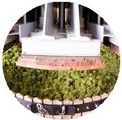Producing rosés
To produce our rosé, the grapes of Mencía selected for this type of wine go through the following steps: Grape selection: after the first selection in the vineyards, once at the cellar, the grapes experience the final selection on a sorting table to get rid of any green or unhealthy grapes as well as any other unwanted element. Final cooling: to guarantee the best conditions, it’s important to pick the grapes during the night or very early in the morning, so that they are still cool when they get at the cellar. However, before the vinification, the grapes are kept in a cold storage unit to cool them down. |
|
| |
Destemming: berries are separated from the stems. Crushing: the grapes go through corrugated rollers that gently break the skins, so that the free-run juice may be drained quickly. | 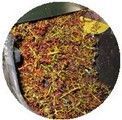 | ||
Bleeding: using gravity, we get the free-run juice. As there is no pressing in this kind of vinification, the free-run juice has hardly any colour. Sulfiting: once in the vat, we add the adequate dose of sulphur dioxide, which is the most widely used preservative in winemaking (antiseptic and antioxidant). |
| ||
Debourbage: we let the juice settle at cold temperature between 8 and 24 hours, so that any sediment sinks to the bottom and therefore may be removed by physical decanting. Vatting: The free-run juice is then racked to a vat, so that the alcoholic fermentation may start. The most commonly used are stainless steel or concrete vats, but some also use oak barrels. | 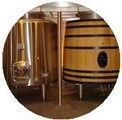 | ||
Alcoholic fermentation: during fermentation the must turns into wine thanks to the yeasts that convert sugars into alcohol. Yeasts are the microorganisms present on grape skins that quickly multiply themselves eating the available glucose (sugar present in the juice) to produce alcohol and carbon dioxide. When the fermentation is over, they die and sink down to the bottom of the vat and they are then called lees. The sugars that remain without being transformed into alcohol are called residual sugars. | 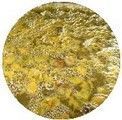 | ||
Malolactic fermentation: the acids present in wine are tartaric, malic and citric. Citric acid quickly disappears during the alcoholic fermentation, but malic acid is extremely important and plays a fundamental role in the biological stability of wine. After the alcoholic fermentation, lactic acid bacteria convert malic acid into lactic acid, which is softer. Thanks to the malolactic fermentation, wines are rounder, richer with a pleasant mouthfeel and specially enhance body and persistence. During the malolactic fermentation, the average temperature is around 20ºC. |  | ||
Devatting: process also called délestage, which consists in separating the wine from the remaining sediments of fermentation. Racking: the wine is then racked off to another vat to get rid of any tiny sediments, that could still be present in the wine. |
| ||
Fining: a fining agent (colloidal substance, which can be mineral, vegetal or animal) is added to the wine and allows any insoluble suspended matter to sink down. | |||
Tartaric stabilization: the wine is cooled down (temperature below 0ºC), so that the soluble salts of tartaric acid dissolved in the wine precipitate. If this step is skipped or not carried out properly, they would precipitate later on inside the bottle forming crystals. Ageing: ageing in oak is not a usual process in rosés, but some are either aged a few months of barrel fermented. Bottling: once the final blend is defined and filtered to avoid any kind of contamination, the analysis must certify that the wine is stable and ready to be bottled, before doing so. For wineries without a bottling plant, there are companies offering a mobile bottling service. |  | ||
| Fermentación en barricas Variedades blancas como Godello pueden ser utilizadas para la fermentación en barricas. Igualmente, ésta es siempre una decisión de la bodega. El proceso de elaboración es similar sólo que la fermentación alcohólica y, eventualmente, la fermentación maloláctica se realizan en estos recipientes de madera. En esta etapa el vino gana aromas y sabores que le aporta la madera, a través de sus minúsculos poros, y se produce una interacción entre los taninos del roble y las proteínas de la levadura. Durante este proceso se puede realizar el bastoneo (batonagge) , que es simplemente “mover” el vino dentro de la barrica, para que las levaduras que estén aún trabajando y las lias, continúen cediendo cualidades al vino. Pasada la fermentación maloláctica se trasiega el vino y se guarda nuevamente en las barricas donde se procede a su clarificación. | 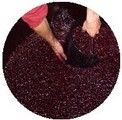 |
 Paseo de la constitución 106. 24540 Cacabelos (León) Spain
Paseo de la constitución 106. 24540 Cacabelos (León) Spain +34
+34 
 vinosdelbierzo
vinosdelbierzo




